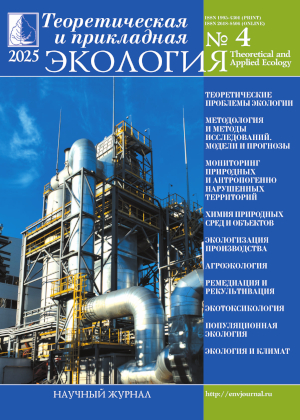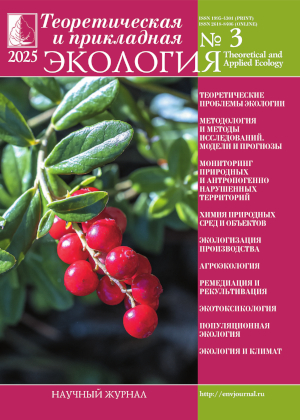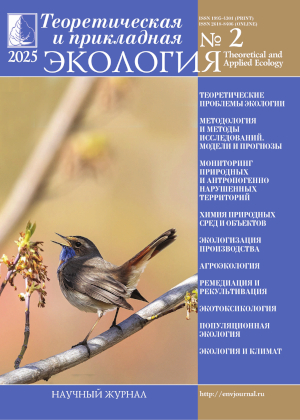 ISSN 1995-4301
ISSN 1995-4301(Print)
ISSN 2618-8406
(Online)
Online version of the journal
|
Zoobentos of the Zimnyaya Zolotitsa River at the Lomonosov diamond deposit |
||||
| M.A. Studenova, I.I. Studenov, A.G. Zavisha, A.T. Lapikova | ||||
| Section: Monitoring of natural and anthropogenically disturbed areas |
||||
| 22 invertebrate taxons of zoobenthos were found over the entire study period in the Zimnyaya Zolotitsa River at the Lomonosov diamond deposit. The number of sampling points (stations) for monitoring period is 6. The average number of taxons per station for the entire monitoring period is 11, ranging from 3 to 16. Almost annually, larvae of chironomidae were found at all stations in samples; the frequency of them for all stations over the entire monitoring period was 94%. In addition, the mayfly larvae (89%), diptera larvae (85%), оligochaeta (82%) and hydrachna (78%) were the most common. The average value of the Shannon index as a whole on the studied part of the Zimnyaya Zolotitsa river system for the period 2000–2021 amounted to 1.87, varying from 0.76 (the Svetly Creek, 2016) up to 2.9 (the Svetlaya River). The Margalef species wealth index as a whole on the studied part of the Zimnyaya Zolotitsa River was 0.85. The Pielu equalization index averaged 0.58, indicating the presence of dominant taxons in samples. The number of invertebrates on the studied section of the Zimnyaya Zolotitsa River over the years of monitoring varied from 110 to 28375 spec/m2, averaging 5369 spec/m2. The biomass of invertebrates on the studied part of the Zimnyaya Zolotitsa River over the years ranged from 0.026 to 29.060 g/m2, on average – 4.015 g/m2. Despite the lack of negative impact on the river ecosystem, one of the dominant groups in the zoobenthos is оligochaeta, the proportion of which varied from 4.4% at 148 km from the mouth of the Zimnyaya Zolotitsa River up to 24.1% at 152 km. Taking into account the relatively high proportion of oligochetes in benthic samples, an oligochete index was used to assess water quality in the Zimnyaya Zolotitsa River. In general, the Zimnyaya Zolotitsa river system is estimated as pure – the average оligochaeta index for all sampling points for the entire monitoring period was 8%. One-time increases in the оligochaeta index to maximum values suggest a slight contamination of the river based on the index gradation. These increases are likely related to natural processes in the river system, as evidenced by high оligochaeta index values at the upper sampling points (169 km) located outside the deposit area. | ||||
| Keywords: Zimnyaya Zolotitsa river, zoobenthos, taxonomic composition, number, biomass |
||||
| Link | ||||
 |
||||
| Article published in number 1 for 2024 DOI: 10.25750/1995-4301-2024-1-054-063 |
||||
|
|
36, Moskovskya street, Kirov, 610000, Editorial Board "Theoretical and Applied Ecology." Phone/fax: (8332) 37-02-77 e-mail: envjournal@vyatsu.ru The journal was founded in 2007 |
||||||




 Select viewing options
Select viewing options